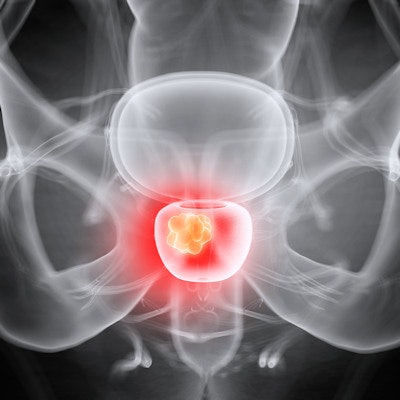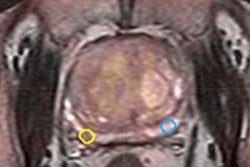
Low-risk prostate cancer patients who underwent multiparametric MRI (mpMRI) for active surveillance of the disease felt better about their experience than those who underwent transrectal biopsy, according to a study in the October issue of the Journal of the American College of Radiology.
Results of a questionnaire that asked patients to score their pain, fear, and anxiety before, during, and after their procedures showed significantly less affinity for and more adverse mental and physical effects with a biopsy than an mpMRI scan.
"Patient-reported preference for prostate mpMRI over transrectal prostate biopsy may inform decision-making for clinical indications where the diagnostic benefits of these tests are similar," wrote lead author Dr. Prasad Shankar and colleagues from Michigan Medicine and the University of Wisconsin (JACR, October 2019, Vol. 16:10, pp. 1385-1393).
"The quantified health utility scores associated with prostate mpMRI and transrectal prostate biopsy can be used to inform cost-effectiveness studies, decision-tree modeling, and quality improvement initiatives," they noted.
For men with low-risk prostate cancer -- that is, Gleason score 3 + 3 and some low-volume Gleason 3 + 4 -- surveillance rather than treatment is often the preferred course of action. Options include prostate biopsies and noninvasive mpMRI to confirm a diagnosis and for follow-up at six to 12 months to observe any evidence of disease progression.
"Both [options] are capable of assessing for occult clinically important prostate cancer and may be better tolerated by patients," Shankar and colleagues wrote. "However, although some quality-of-life measures have been assessed in patients with prostate cancer, to our knowledge, patient health utilities regarding prostate mpMRI and MR-ultrasound fusion biopsy have not been assessed."
To explore this issue further, the researchers divided 110 patients (median age, 66 years; range, 60-69 years) with Gleason 6 prostate cancer into an mpMRI group of 55 subjects and a biopsy group of 55 subjects. The participants were asked to fill out a questionnaire 24 to 72 hours after their procedure to calculate a testing morbidities index (TMI). The TMI survey included seven sections that inquired about pain, fear, or anxiety experienced before, during, and after the mpMRI or biopsy, as well as any mental and physical effects.
Each of the seven domains was rated on a scale from 1, meaning no health impact, to 5, meaning an extreme health impact. All 110 patient completed the survey, and the results were used to tabulate a summary utility score for quality of life, with 0 as death and 1 as perfect health, which served as the study's primary outcome.
The poll revealed a statistically significant difference in quality-of-life impact, with mpMRI achieving a summary utility score of 0.95, compared with a score of 0.82 for transrectal biopsy (p < 0.001). The greatest difference within the TMI questionnaire was for intraprocedural pain, with transrectal biopsy registering an overall score of 2.6, compared with 1.3 for mpMRI (p < 0.001).
"The results of this investigation allow for quantification of the degree of detriment experienced by participants during both testing experiences as well as the relative impact of the testing experiences," the authors wrote.




















